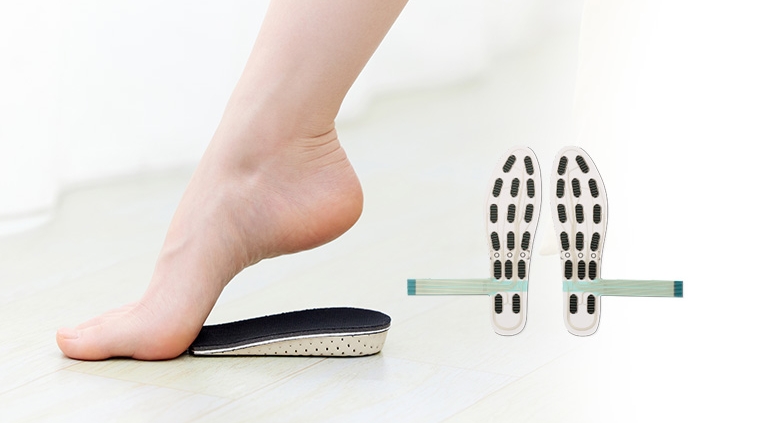Thin-film pressure sensors, as a sensitive and efficient sensor technology, are being widely used in various fields. Foot shape testing is an area with great potential and application prospects. This article will explore the important role of thin-film pressure sensors in foot shape testing and the advantages they bring.
Working Principle of Thin-Film Pressure Sensors
Thin-film pressure sensors typically consist of a pressure-sensitive resistor. When subjected to external pressure, the resistance in the thin film changes. This change is converted into an electrical signal through a circuit, which, after processing, can reflect the magnitude and distribution of the pressure. Thin-film pressure sensors have characteristics such as simple structure, high flexibility, and low cost, making them particularly suitable for applications that require distributed pressure measurement.
Importance of Foot Shape Testing
Foot shape testing has important applications in the fields of medicine, sports science, and shoe design. In medicine, foot shape testing can detect abnormal pressure distribution in the feet, helping diagnose various foot diseases such as diabetic foot and plantar fasciitis. In sports science, foot shape testing can analyze athletes’ gait, optimize training, and improve athletic performance. In shoe design, understanding the foot shape characteristics of different populations can help design more comfortable and ergonomically appropriate shoes.
Application of Thin-Film Pressure Sensors in Foot Shape Testing
- Distributed Measurement: Although thin-film pressure sensors are not suitable for extremely high-precision pressure measurements, their superior distributed measurement characteristics allow them to capture the pressure distribution of the sole over a large area. By embedding multiple thin-film pressure sensors in insoles or testing platforms, the pressure changes on the sole can be captured in real time, providing a comprehensive pressure distribution map.
- Real-Time Monitoring: The fast response characteristics of thin-film pressure sensors enable real-time monitoring. This is particularly important for gait analysis and the study of pressure changes on the sole during dynamic activities. Athletes can obtain real-time pressure data on the sole during activities such as running and jumping, allowing them to adjust their posture and movements.
- Comfort Evaluation: Shoe manufacturers can use thin-film pressure sensors to evaluate the comfort of shoes. By testing the pressure distribution on the sole of different shoe designs among various groups of people, the optimal design can be found to enhance the comfort and performance of the shoes.
- Personalized Customization: By using foot shape data obtained from thin-film pressure sensors, shoe designers can provide personalized customization services. Everyone’s foot shape is different. Through accurate measurement and analysis, customized shoes that fully conform to the user’s foot shape can be made, improving the wearing experience.
Conclusion
The application of thin-film pressure sensors in foot shape testing shows great potential and advantages. Although they are not suitable for extremely high-precision pressure measurements, through distributed measurement, real-time monitoring, and personalized customization, thin-film pressure sensors still play an important role in foot shape testing. They not only improve the efficiency and accuracy of foot shape testing but also provide valuable data support for medical diagnosis, sports science research, and shoe design. In the future, with the continuous advancement of sensor technology, the application of thin-film pressure sensors in foot shape testing will become more widespread and in-depth, bringing more innovation and development to various related fields.



